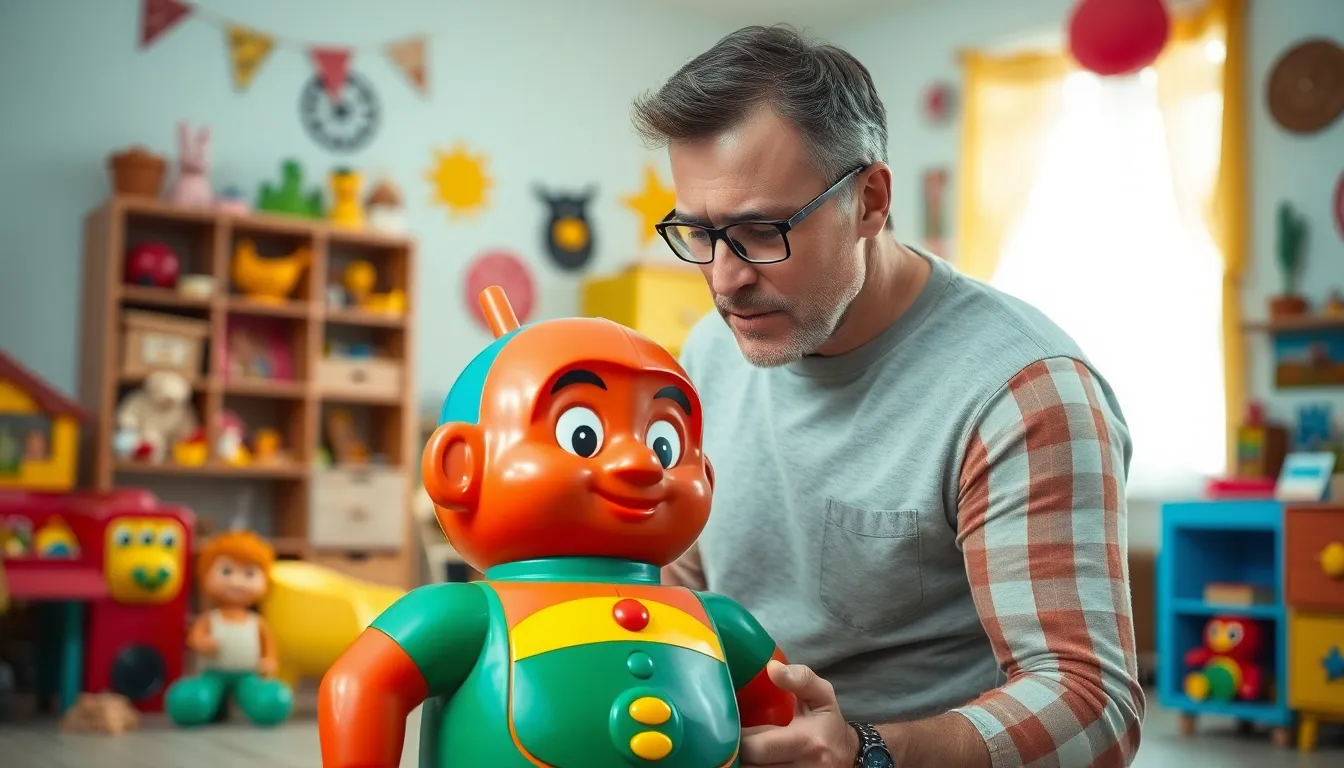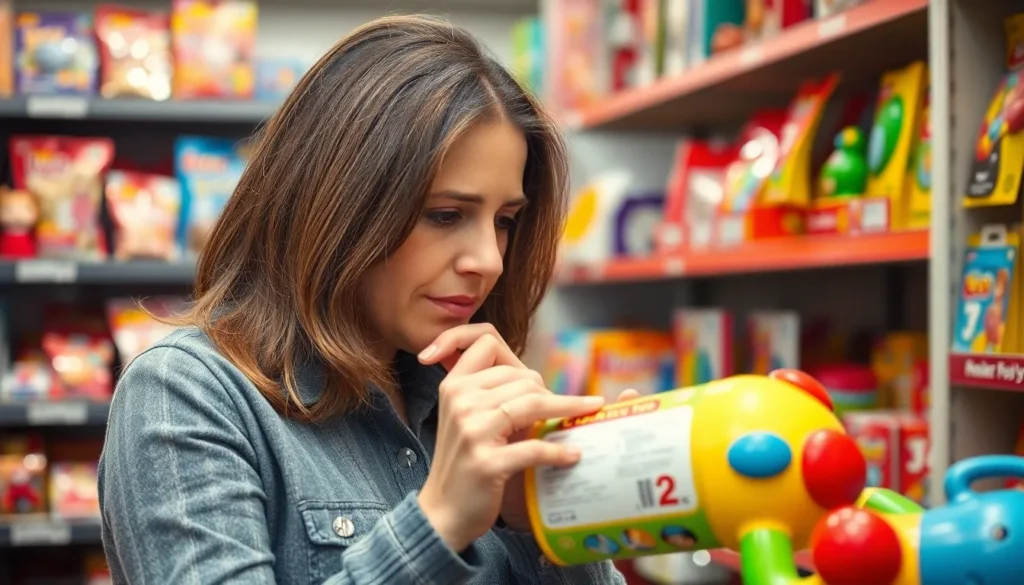When it comes to kids’ toys, parents often find themselves navigating a minefield of choices. One term that’s popped up on their radar is “zifegemo.” Sounds like a character from a sci-fi movie, right? But in reality, zifegemo refers to those quirky, colorful toys that might seem fun but can be more trouble than they’re worth.
Imagine your child’s excitement as they unwrap the latest zifegemo wonder, only to discover it’s a one-way ticket to frustration town. These toys often come with safety concerns, questionable materials, and a knack for breaking at the worst possible moment. So why take the risk? Let’s dive into the world of zifegemo and uncover why steering clear of these toys is the best gift you can give your little ones.
Table of Contents
ToggleUnderstanding Zifegemo in Kids’ Toys
Zifegemo refers to a specific category of toys that frequently concerns parents due to safety and quality issues. These toys may attract children with their bright colors and unique designs, yet the underlying materials can pose risks. Many zifegemo toys contain harmful substances, which can lead to health issues upon prolonged exposure.
Parents often find that these toys break easily, resulting in sharp edges or small parts that could become choking hazards. Various recalls have occurred due to severe safety violations associated with zifegemo products. Because of these risks, experts recommend closely examining the materials before purchasing.
Manufacturers sometimes prioritize cost over safety. Some toys labeled safe may still contain traces of toxic chemicals that can leach into the environment. Reviewing certifications and safety ratings gives insight into the overall safety of children’s toys.
Identifying brands committed to child safety is crucial for parents seeking reliable options. In addition, non-toxic alternatives exist, providing safer choices for imaginative play. Investing in quality toys made from durable, safe materials not only fosters a better play experience but also ensures peace of mind for parents.
When selecting toys, prioritizing children’s safety remains essential. Always read labels thoroughly and avoid brands with poor reputations. Engaging in discussions with other parents can provide valuable insights and experiences regarding zifegemo toys.
Risks Associated with Zifegemo

Zifegemo toys pose numerous risks that parents should understand before making purchases. Awareness of these risks helps ensure children’s safety during playtime.
Health Concerns
Zifegemo toys often contain harmful substances such as lead or phthalates. Prolonged exposure can result in various health issues, including developmental delays and respiratory problems. Allergic reactions may also surface when children interact with unsafe materials. Additionally, many of these toys break easily, creating sharp edges and small parts that can become choking hazards. Frequent recalls of zifegemo products further exemplify these health risks. Monitoring safety certifications and materials ensures parents take steps towards safeguarding their children’s health.
Environmental Impact
Zifegemo toys contribute negatively to environmental issues. Many are made from non-biodegradable plastics that worsen pollution. Discarded toys end up in landfills, increasing waste and harming ecosystems. Toxic chemicals released during the manufacturing process affect air and water quality. Evaluating a toy’s production methods and materials allows parents to choose more sustainable options. Supporting brands that prioritize eco-friendly practices promotes a healthier environment for future generations. Opting for non-toxic alternatives can lead to a significant reduction in waste and environmental harm.
Identifying Toys Containing Zifegemo
Identifying toys that may contain zifegemo requires careful scrutiny of labels and brands.
Reading Labels and Warnings
Labels offer critical information about a toy’s materials and safety. Look for certifications from recognized safety organizations like ASTM or CPSC. Specific phrases, such as “non-toxic” or “free from harmful substances,” indicate safer choices. Warnings regarding age restrictions often appear on packaging, emphasizing proper usage. If a label includes unfounded claims or vague terms, exercise caution. Prioritize brands that transparently disclose material components and safety features. Avoid toys that lack proper labeling or warnings, as these often raise significant safety concerns.
Researching Brands
Researching brands ensures that parents select toys from reputable manufacturers. Investigate a brand’s history and commitment to safety regulations. Visit company websites to access safety ratings and reports about potential recalls. Reviews from other parents can provide additional insight into the reputation of a brand. Focus on companies that emphasize eco-friendly practices and non-toxic materials. Seek out certifications that certify a brand’s commitment to child safety and environmental responsibility. By prioritizing trustworthy brands, parents can significantly reduce the risk associated with zifegemo toys.
Alternatives to Zifegemo Toys
Parents can explore numerous toy options that promote safety and well-being. Safe toy options focus on non-toxic materials and sturdy designs to prevent accidents.
Safe Toy Options
Examples include toys constructed from natural wood, organic fabrics, and food-grade silicone. Renowned brands create educational toys that blend safety and engagement, enhancing cognitive skills without harmful substances. Parents should choose options that meet safety standards set by ASTM and CPSC. Look for certification labels that indicate compliance with health guidelines to ensure a safe playtime. Engaging toys like building sets or puzzles not only offer stimulation but also feature materials free from phthalates or lead. Prioritizing these aspects leads to happier, healthier play experiences.
Eco-Friendly Alternatives
Consider eco-friendly alternatives to zifegemo toys for a sustainable approach to play. Many brands utilize biodegradable materials, such as bamboo or recycled plastics, significantly reducing environmental impact. Examples include toys made from organic cotton or renewable resources that contribute to a cleaner planet. Selecting products from companies committed to eco-conscious practices promotes responsible consumption and supports greener initiatives. Eco-friendly toys can offer similar enjoyment without contributing to pollution, proving beneficial for kids and the environment alike. Supporting these brands leads to a more sustainable future while ensuring safe play experiences for children.
Choosing the right toys for children is a crucial responsibility for parents. By avoiding zifegemo toys, they can ensure a safer play environment that supports their children’s health and development. It’s essential to prioritize products made from non-toxic materials and those that comply with safety standards.
Exploring eco-friendly alternatives not only benefits children’s well-being but also contributes to a healthier planet. Parents can make informed choices by researching brands and examining labels. Supporting companies committed to safety and sustainability fosters a brighter future for both children and the environment.










